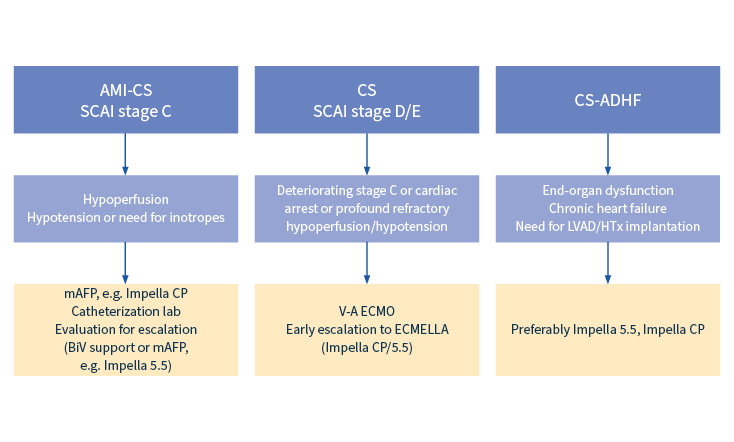Patient Identification

Early Identification of Cardiogenic Shock Improves Outcomes
Timely treatment adhering to a best practice protocol, that includes early use of mechanical circulatory support, hemodynamic monitoring, and aggressive reduction of inotropes and pressors, can help patients achieve myocardial recovery.1
MCS and the Spectrum of Cardiogenic Shock
This paper of Andrea Montisci, MD, et al. discusses the latest guidance for identifying patients with cardiogenic shock (CS) who are candidates for mechanical circulatory support (MCS).
Algorithm for MCS Selection in Cardiogenic Shock
Letizia F. Bertoldi, MD, discusses practical management of inotropes in cardiogenic shock as well as an algorithm for MCS selection.


A Propensity Score-Matched Analysis of the Impact of an Institutional Allocation Protocol to Short-Term Mechanical Circulatory Support
In this paper, Sascha Ott and colleagues describe a standard operating procedure (SOP) they developed for determining the temporary mechanical circulatory support (tMCS) strategy for patients in cardiogenic shock (CS).


Recognizing Patients as Candidates for Mechanical Circulatory Support Along the Spectrum of Cardiogenic Shock
This paper of Andrea Montisci, MD, et al. discusses the latest guidance for identifying patients with cardiogenic shock (CS) who are candidates for mechanical circulatory support (MCS).
Explore Additional Resources
References
- O'Neill, W.W., TCT 2020.
Discover More About Cardiogenic Shock
NPS-2631
